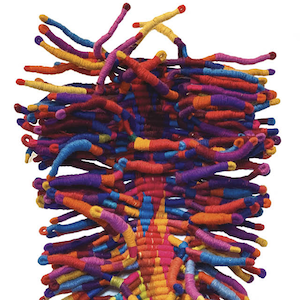Numbers, in Culture, Entertainment, & Fashion
By Jo Phillips
If there’s one element often left out of creative endeavours, it’s numbers. For the most part, numbers are associated with ‘Type A’ pursuits, including medical sciences, engineering, business, and, of course, finance. Creativity, on the other hand, is associated with the emotional exploration of art forms like literature, film, and fashion.
Photo by Pascal Garten on Unsplash
But are numbers actually the antithesis of creativity? After all, even the most Picasso-minded painter will need to float back down to earth to pay their utility bills and balance their finances. And certain professionals, such as artists working with large-scale installations, will need to incorporate the laws of physics into their building plans.
But there’s a strong relationship between numbers and the arts. From fashion to culture to environmentally aware contemporary art, there’s a massive field of numbers-first art forms that have nothing to do with digital technology. Let’s take a look at four modern examples.
38: Couture Meets the Spinning Wheel
The casino is one of the last accessible vestiges of couture culture. Throughout the 20th century, casinos dotting Europe and the US were places where high fashion met entertainment. Just think back to 1995’s Casino, in which Sharon Stone traipsed around in looks from Courréges, along with dozens of hand-sewn looks from Rita Ryack and John A.
But the average casino floor isn’t just about hand-sewn decals. It’s largely about numbers. For example, roulette is one of the most common games played. The board includes pockets with roulette numbers one through 38 in the US (versus 36 in Europe), which players must assess before placing their bets. Most rely on probabilities to navigate the game.
For example, splitting a number has a 5.26% chance of hitting, while a basket of three numbers has a 7.89% chance. In other words, that’s a lot of numbers talk for a high fashion Prada or Gucci getup.
3,000: The Perfect Number for Perfumers
According to Givaudan, one of the world’s most prestigious French perfume brands, perfumery is an art rather than a science. And with over 250 years of experience stretching back to 1768, Givaudan would know the difference—but that doesn’t mean there’s not a scientific precision behind the nose of the world’s top perfumers.
In fact, in order to become a master perfumer, a professional must be able to identify 3,000 distinct notes. This includes understanding the volatility of the oil used to distil a scent, the evaporation time for each scent in a perfume, and how each component interacts. There’s even a ‘scent pyramid’ which provides a layering structure used in perfumery.

Photo by Kelly Sikkema on Unsplash
60,000: Making Time Physical
Back in 2017, French artist Emmanuelle Moureaux partnered with the National Art Center of Tokyo to celebrate its 10th anniversary. As an artist and architect, Moureaux is no stranger to bringing numbers into his design schemes. However, the paper-based installation, titled Forest of Numbers, involved more rote counting than engineering formulas.
The project included over 60,000 paper cutouts of numbers. Each was carefully placed to represent the passage of ten years—but these weren’t to celebrate the past. The numbers explore the decade 2017-2026 and are designed to quantify the passage of time in a more physically real sense. In other words, it allows visitors to quantify time in a new way. Moureaux designed pathways between the groupings, which lets visitors literally wander through the decade at their leisure.
16, 100,000, & 220,000: Walking on Water
Bulgarian-born artist Christo was known for co-creating massive projects alongside fellow creator Jean-Claude. Most of their projects involved site-specific environmental pieces—but the largest was a solo project undertaken by Christo for Italy’s Lake Iseo. The project is hailed as one of the greatest pieces of ‘land art’ ever created.
The sixteen-day installation, launched in 2016, involved 100,000 square meters of bright yellow fabric, which is attached to 220,000 polyethene cubes. The cubes are tied together to create a path across the lake which let visitors literally walk across the water. Titled The Floating Piers, the experience was meant to emulate what it would feel like to travel by walking on water.



